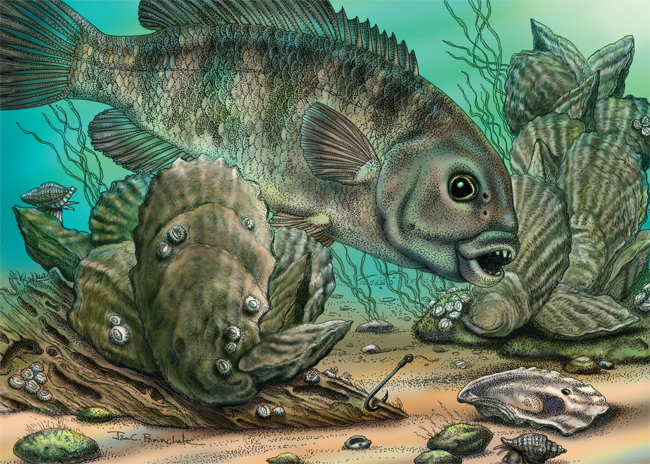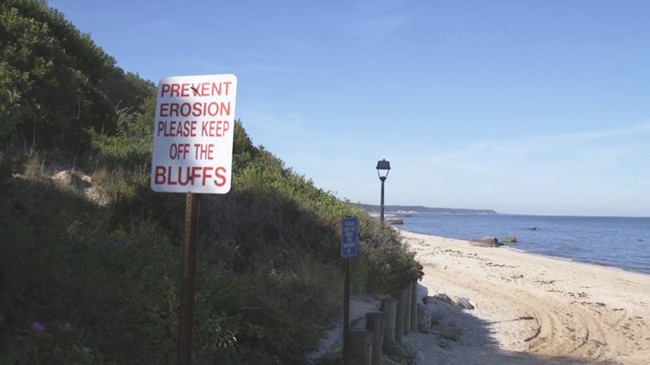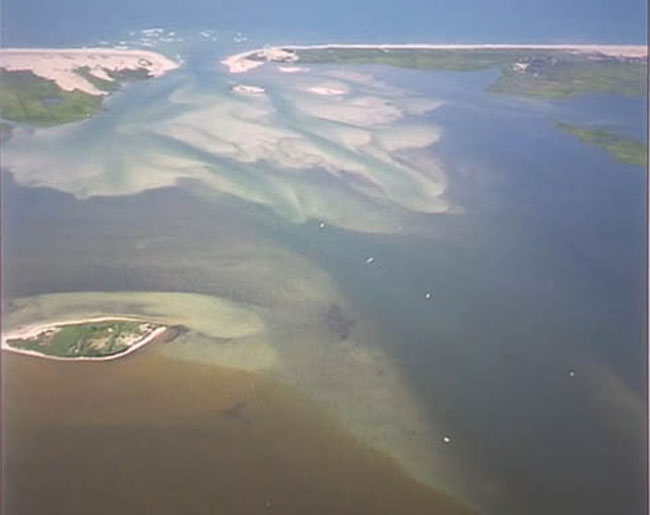— Published for Stony Brook University's E-news Site, Happenings
(Also published on 10/20 by: Coastal News Today, DredgeWire; 10/28 by: Patch.com's Three Villages site, Long Island Business News)
The six projects in NYSG’s most recent research suite are led by principal investigators at Stony Brook University, Cornell University and the Rochester Institute of Technology
Stony Brook, NY, October 16, 2020 - New York Sea Grant (NYSG) has awarded more than $2.1 million to support six coastal science research projects —three of which are being led by Stony Brook University faculty — that explore topics relating to and benefiting New York’s coastal environment, communities and economies. The projects are sponsored by NYSG and funded through the National Oceanic and Atmospheric Administration (NOAA), Sea Grant’s federal parent agency.
“New York Sea Grant is excited to announce six new projects selected through our biennial call for research proposals,” said NYSG Director Dr. Becky Shuford. “After a thorough peer review process followed by a technical review panel, projects were selected that address a variety of research topics and cover the diverse geography of our State as well as multiple subjects of interest to our stakeholders."
“This set of projects — addressing topics such as coastal processes and community flood resilience, microplastic impacts on benthic organisms and environments, aquaculture studies to support understanding of the potential of shellfish and macroalgae operations, and habitat restoration — will contribute to the long-standing and growing body of NYSG-supported science-based knowledge available to coastal communities in New York State.”
Project Summaries
Identification of Superior Diploid and Triploid Oyster Lines for Aquaculture Operations in New York

Oyster reefs were once a dominant feature of estuaries along the Atlantic and Gulf of Mexico coasts with healthy communities of eastern oyster. New research supported by NY Sea Grant will provide information to support oyster restoration efforts in NY/NJ harbor. Image credit: Jan Porinchak
Oyster aquaculture represents a sustainable industry that contributes to the economies of local coastal communities. Marinetics Endowed Professor Bassem Allam, from Stony Brook’s School of Marine and Atmospheric Sciences (SoMAS), is leading a team including Research Associate Professor Emmanuelle Pales-Espinosa and Professor Robert Cerrato, also of SoMAS, and Cornell Cooperative Extension’s Gregg Rivara in a study comparing the performance of different oyster lines derived from different genetic backgrounds. Further, the team will contrast the performance of locally derived triploid oysters with that of their diploid counterparts. Superior oyster lines identified during the study will be maintained and broadly distributed to the aquaculture industry in the state and beyond. New York consumers will benefit from an increased availability of high quality and competitively priced oyster products.
Erosion and Recession of Coastal Bluffs: Characterizing Erodibility of Bluff Materials under Various Land- and Sea-Based Conditions

In an effort to help prevent erosion, signage encourages beachgoers to keep off coastal bluffs. New research supported by NY Sea Grant will provide information that will allow for improved prediction of bluff erosion that informs planning by coastal communities. Image credit: Cornell Cooperative Extension Marine Program
Coastal bluffs comprise a significant percentage of shorelines in the Great Lakes, U.S. Atlantic and Pacific Coasts. Erosion and recession of bluffs are an issue of concern to coastal communities and are being more frequently and extensively impacted by rising sea levels, extended droughts, heavier rainfall, and coastal storms. Assistant Professor Ali Farhadzadeh, from Stony Brook’s Department of Civil Engineering and also SoMAS, and Distinguished Service Professor Henry Bokuniewicz of SoMAS will conduct a study to identify and quantify some of the underlying processes, both sea- and land-based that lead to coastal bluff erosion. With an enhanced understanding of the factors involved with bluff recession gained through this project, a modeling framework that improves prediction of bluff erosion is expected. The developed model could also be used to identify risk areas where shoreline protection measures, including natural and nature-based features, could prevent or slow further recession. The results will be useful for resource managers and property owners to better predict and respond to future erosion under varying climate changes.
The Use of Macroalgae to Expand Aquaculture and Prevent, Control, and Mitigate Harmful Algal Blooms in New York’s Coastal Zones

Long Island’s Great South Bay became clearer during the 2019 season due to a new inlet but it is not immune to brown tides and other harmful algal blooms (HABs). New research supported by NY Sea Grant will develop and test shellfish aquaculture techniques that integrate macroalgae culture. Macroalgae have been shown to help control a variety of HABs populations. Image credit: Chris Gobler
During the past several decades, harmful algal blooms (HABs) have had significant environmental and economic consequences in New York’s coastal waters. Endowed Chair of Coastal Ecology and Conservation Christopher Gobler and Senior Research Support Specialist Michael Doall of SoMAS will conduct a study to assess the ability of cultivable macroalgae to inhibit the growth of HAB species common to NY waters while also expanding potential aquaculture opportunities. Previous studies have shown that macroalgae can inhibit the growth of HAB species through several mechanisms, including pH elevation, competition for nutrients, algicidal bacteria associated with macroalgae that produce allelochemicals that inhibit HABs species. The study will develop and assess cultivation techniques and test the feasibility of co-culturing HAB-combative seaweeds with bivalve shellfish at commercially viable scales on shellfish farms. The expected results of this project are the development of seaweed cultivation best practices and guidance materials that can be used by aquaculture operators and will create an opportunity to both expand the scope of the New York aquaculture industry and introduce a cost-effective method for mitigating HABs.
The other three projects in NYSG's most recent research suite, which are led by principal investigators at Cornell University and the Rochester Institute of Technology, focus on the Hudson River and Lake Ontario and spotlight issues including oyster restoration, flood resilience and marine debris. For more, read the press release.
This announcement will be featured in NYSG’s forthcoming newsletter, NY Coastlines, for which e-subscriptions can be made at www.nyseagrant.org/nycoastlines. The issue will also feature: A follow-up on products produced and projects undertaken this past summer to support NY’s coastal stakeholders during the COVID-19 pandemic; how Long Island’s bays fared this summer in regard to harmful algal blooms; recordings from NYSG’s virtual summer research seminar series and much more.
More Info: New York Sea Grant
New York Sea Grant (NYSG), a cooperative program of Cornell University
and the State University of New York (SUNY), is one of 34 university-based
programs under the National Oceanic and Atmospheric Administration’s
National Sea Grant College Program.
Since 1971, NYSG has represented a statewide network of integrated
research, education and extension services promoting coastal community
economic vitality, environmental sustainability and citizen awareness
and understanding about the State’s marine and Great Lakes resources.
Through NYSG’s efforts, the combined talents of university scientists
and extension specialists help develop and transfer science-based
information to many coastal user groups—businesses and industries,
federal, state and local government decision-makers and agency managers,
educators, the media and the interested public.
The program maintains Great Lakes offices at Cornell University, University at Buffalo, SUNY Oswego and the Wayne County Cooperative Extension office
in Newark. In the State's marine waters, NYSG has offices at Stony Brook
University in Long Island, Brooklyn College and Cornell Cooperative
Extension in NYC and Kingston in the Hudson Valley.
For updates on Sea Grant activities: www.nyseagrant.org has RSS, Facebook, Twitter, Instagram, and YouTube links. NYSG offers a free e-list sign up via www.nyseagrant.org/nycoastlines for its flagship publication, NY Coastlines/Currents, which is published quarterly. Our program also produces an occasional e-newsletter,"NOAA Sea Grant's Social Media Review," via its blog, www.nyseagrant.org/blog.